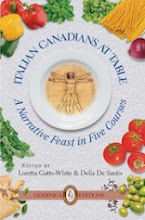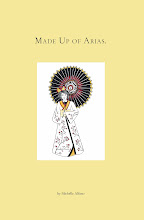 Lulu in Hollywood by Louise Brooks (Knopf, 1974) 109 pages
Lulu in Hollywood by Louise Brooks (Knopf, 1974) 109 pagesLouise Brooks was an outcast in Hollywood shortly after the silent films became talkies. But not because she had a poor voice, a malady which condemned a number of silent film stars to cinematic oblivion. She had, as she says in her memoir/
collection of insightful essays, "a talent for enraging people". That voice, that insolent, intelligent, distinctive voice is evident everywhere here in these seven essays. Lulu in Hollywood is a slim but vastly engaging series of essays about her experiences in Hollywood and beyond.
In "Kansas to New York" Louise tells of how she was encouraged by an independent, artistic mother to dance. The fifteen year old excelled and was selected to dance with the prestigious Denishawn School of Dancing and the Related Arts led by Ruth St. Denis and Ted Shawn in New York. Off she went with her chaperon and was introduced into a seductive, sometimes glamorous, sometimes seedy, New York theater scene and what was once known as Café society.
There Louise worked hard to eradicate her Kansas accent and her bumpkin mannerisms. After the tour, her world encompassed sugar daddies, jealous chorus girls, rich young men who thought nothing of buying a casual girlfriend a mink or a diamond which our young heroine took of advantage of (frequently). Louise came under the wing of Barbara Bennett, daughter of the famous theater actor Richard Bennett, sister of famous beauties/rising stars Constance Bennett and Joan Bennett.
Brooks morphs quickly into a Ziegfeld Follies girl and becomes anathema to the other "girls" because of the perceived favoritism she received and is unceremoniously told that the other girls will not share a dressing room with her. She gets thrown out of the Algonquin Hotel because of her clothes (too young looking, too provocative). Clothes become an ongoing source of embarrassment or pride for Louise, a problem that Barbara solves by introducing her to very affluent young men who furnish her wardrobe.
She breaks into silent film in the mid 20s and you soon get a sense in "On Location with Billy Wellman" of how this beautiful, hedonistic girl got so embroiled in the most difficult and humiliating situations. Bear in mind she is still only a teenager. A sensation at a young age, beautiful, with no restrictions, and talent to burn matched only by her defiant attitude towards authority.
She either didn't care or understand that her actions had serious consequences. Her seeming indifference to him is perceived as dislike by director William Wellman, an insecure and vindictive youth who directed her in Beggars of Life (1928), a serious melodrama involving depression era tramps on the run. He asks her to perform some of her own stunts and almost gets her sucked under a train in the process. A fling with an indiscreet stunt man on the set results in his meant to be overheard query in front of the crew as to whether she has syphilis. Her co-star Richard Arlen (yes you might ask who? but apparently he had a healthy film career both before and after this film) is so incensed by her seemingly swift success that he spares her her nothing once he is drunk on the set telling her she is overpaid, a bad actress and, for good measure, that her eyes are too far apart.
Louise seems unfazed by her rough treatment in the retelling of this tale - perhaps because it presages infinitely rougher times ahead.
"Marion Davies' Niece" is a gentle but candid profile of her troubled best friend, aspiring actress Pepi Lederer (1910 – 1935) who also happened to be the niece of Marion Davies, another actress more famously known for being the mistress of William Randolph Hearst (the inspiration for Orson Welles' film Citizen Kane). Pepi falls in and out of love with other women and lives in a gilded cage through the generosity of Hearst and Davies who seem to retain her in the Hearst entourage for entertainment value. She does not seem able to function separately or healthily from her famous aunt. Cocaine, alcohol and a luxurious lifestyle seemed to have dealt a fatal blow to Pepi who ended up in an asylum, committed by Hearst and Davies, then soon jumped out of a window and killed herself at 25.
She offers a telling portrait of encountering Marion sitting alone in her mansion, playing solitaire in her housecoat and inquiring suspiciously after a minor starlet known to Louise who it is rumored is also the mistress of Hearst. It reminded me of that scene in Citizen Kane where Susan Alexander (the Marion Davies character) is alone at Xanadu, Hearst's vast estate, putting together a vast jigsaw puzzle alone, before a roaring fire, screaming in frustration at Kane for her bored and isolated existence.
A rebel herself, Louise seemed to gravitate towards those who did not fit into the Hollywood system in spite of their success, people like Humphrey Bogart and W.C. Fields about whom she writes here. Both were enormous successes yet seemed to exist apart from the star system in ways that Brooks illuminates.
This instinct or sympathy for the outsider draws her, you might think in an unlikely fashion, to the actresses Lillian Gish and Greta Garbo. One of her contentions is that Gish was perceived as too expensive to retain so the studios deliberately sabotaged her career in the press in the 1930s planting seeds in the public mind that her way of acting was too old fashioned, that she was being eclipsed by newer stars and was much too well paid. Bankers took hold of the studios in the 30s and expensive stars were under scrutiny and then pressure to generate revenue or disappear.
But most Brooks' admirers want, I know I did, to know about the experience of working with German director G.W. Pabst on Pandora's Box (Lulu) which she details in her final essay "Pabst and Lulu". Despite calling herself the "worst actress in the world" obviously G.W. Pabst and the many people who adore her in this film disagree.
She seems to hide very little in retelling her experiences and, true to her own inimitable style, reveals even the most embarrassing of details: the Germans were horrified that Pabst had chosen Brooks for such an iconic German archetype and made their displeasure well known when she arrived in Germany. Marlena Dietrich was very nearly chosen for the role and was sitting in Pabst's office when Brooks cabled her acceptance of the offer. Brooks knew little about Pabst before agreeing to work with him and insists that her boyfriend at the time, the tycoon George Marshall, pushed her into because he wanted a European vacation.
She speaks tenderly of her attraction to the actor Gustav Diessi who played Jack the Ripper and the "happiness" of the scene. Kenneth Tynan, who wrote a terrific profile in the New Yorker in 1979, contends that between takes there were some amorous goings-on. Brooks says that Pabst deliberately chose an actor that Louise would be extremely attracted to. She tells how the unwilling Alice Roberts was finessed into playing the role of the lesbian Countess Geschwitz. Pabst stood behind Brooks so that Roberts could gaze into his eyes and he could elicit the look of love for Lulu he wanted for the scene. Pabst was protective of Brooks, disliking her carousing and drinking and forbidding her to do so during the shoot much to her chagrin. To solicit the feeling of abhorrence and degradation that Lulu must feel when she ends her days as a prostitute, Pabst took Brooks' real clothing and ripped and soiled it. It had the desired effect; she felt demoralized, soiled and degraded in the final scenes.
Once, in anger, Pabst vindictively predicted that Louise would end up as Lulu did: used, discarded and destroyed. She had often said that the trajectory of their lives was the same (hers and Lulu's). But Brooks is much more than that sad mythic creature Lulu ... she survived Hollywood, ostracization by the film industry, addiction, financial ruin, the disappearance of her stellar career by the age of 30. She was urged to begin a new life in Rochester, NY by film archivist James Card who was searching for her in the 1950s. He was able to persuade her to move to Rochester to be near the George Eastman House where may of her films were preserved.
Rescued from oblivion, she began to write, to gather her astute, biting comments into erudite, fascinating essays, and to begin to recognize her worth as an actress, a silent film icon and an exquisite writer.










No comments:
Post a Comment